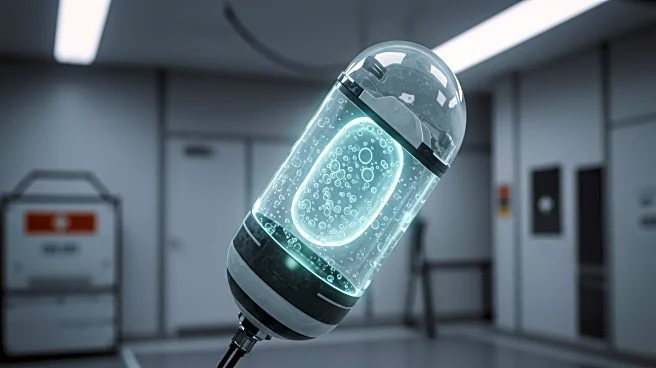What's Happening?
A new oxygenated implant developed by researchers at Cornell University and Giner has shown potential in sustaining insulin-producing cells in rats without the need for immunosuppression. The BioElectronics-Assisted Macroencapsulation (BEAM) system, detailed in a recent Nature Communications paper, uses a miniaturized implantable electrochemical oxygen generator to provide continuous oxygen supply to the cells. This system has successfully reversed diabetes in an allogeneic rat model for up to three months. The innovation addresses a major challenge in cell replacement therapy for type 1 diabetes, which is keeping transplanted cells alive long enough to restore normal blood sugar levels.
Why It's Important?
This development is significant as it could revolutionize the treatment of type 1 diabetes by eliminating the need for lifelong immunosuppressive drugs, which are currently required to prevent rejection of transplanted cells. The BEAM system's ability to maintain high-density cell viability through continuous oxygenation could pave the way for more effective and sustainable cell therapies. For the two million Americans living with type 1 diabetes, this technology could potentially lead to an insulin-free life, significantly improving their quality of life and reducing the risk of complications associated with the disease.
What's Next?
The research team plans to scale up their studies to include pig models and eventually human trials. If successful, this technology could be applied to other conditions requiring cell replacement therapy. The broader implications of this research suggest a future where implants with allogeneic cells could become a routine treatment for various deficiencies, marking a significant advancement in regenerative medicine.














